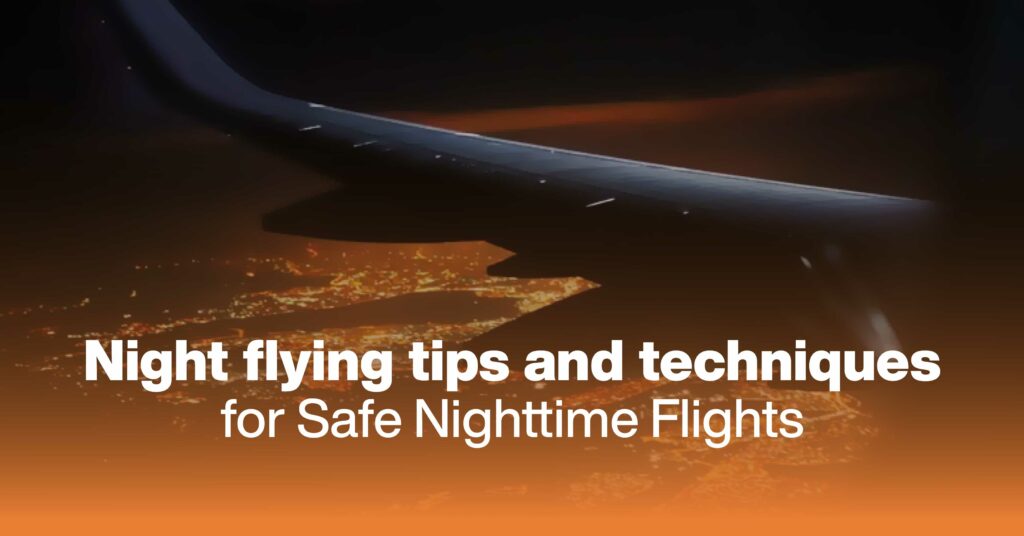Night flying presents a unique set of challenges for pilots. With reduced visibility and increased reliance on instrumentation, it requires a different skill set compared to daytime flights. Pilots must be well-prepared and equipped to ensure safe nighttime flights. In this article, we will explore the key differences between night flying and day flying, along with essential tips and techniques for pilots to enhance their skills and mitigate risks during nighttime flights.
How Is Night Flying Different From Day Flying?
Night flying differs from day flying in several aspects. The most notable difference is the reduced visibility at night. While during the day, pilots can rely on natural light to navigate, at night, they are dependent on artificial lighting sources. This shift in visual cues requires pilots to adapt and use their instruments effectively. It also poses additional challenges in terms of depth perception, which can affect landing and takeoff procedures.
Night Flying Tips And Techniques For Pilots
1. Essential Pre-flight Preparations:
Before taking off for a night flight, it is crucial to thoroughly inspect the aircraft and ensure all systems are in proper working order. Check the status of all lighting systems, including position lights, strobes, and landing lights, to ensure they are functional. Plan your route carefully, considering the availability of suitable landing options and emergency procedures.
2. Proper Aircraft Lighting:
There are specific lighting requirements for aircraft during nighttime flights. Position lights, which are red on the left wingtip and green on the right, should be visible from a distance of at least three miles. The white anti-collision strobe lights help increase visibility and should be on during the entire flight. Additionally, landing lights should be utilized during takeoff, landing, and when flying in congested areas.
3. Importance Of Cockpit Lighting And Instrumentation:
Proper cockpit lighting and instrumentation play a vital role in maintaining situational awareness during night flights. Pilots should ensure that all instruments are well-lit and easily readable. Dimming the instrument lights to a level that provides adequate visibility without causing glare is crucial. It is also essential to have a backup flashlight within reach in case of any instrument lighting failure.
4. Mitigating The Risk Of Fatigue:
Fatigue can significantly impact a pilot’s performance during a nighttime flight. To mitigate the risk of fatigue, pilots should prioritize getting enough rest before the flight. It is recommended to avoid flying during periods when you would normally be asleep. If the flight is long, consider taking short breaks to stretch and stay alert. Stay adequately hydrated and avoid consuming heavy meals that could induce drowsiness.
5. Improve Night Flying Skills Through Training And Practice:
Enhancing night flying skills requires training and practice. Consider enrolling in a specialized night flying course to learn techniques and best practices from experienced instructors. Practice flying at night regularly to gain confidence and familiarity with the unique challenges posed by nighttime conditions. It is also helpful to review relevant regulations and guidelines to stay updated on any changes or recommendations.
Conclusion
Safe night flying requires pilots to adapt to the unique challenges that arise from reduced visibility and increased reliance on instrumentation. Following the tips and techniques outlined in this article can significantly enhance a pilot’s ability to navigate and mitigate the risks associated with nighttime flights. By ensuring proper pre-flight preparations, utilizing appropriate aircraft lighting, maintaining suitable cockpit lighting and instrumentation, managing fatigue, and investing in training and practice, pilots can confidently navigate the skies at night.
Frequently Asked Questions
1. What are the essential pre-flight preparations for a night flight?
Essential pre-flight preparations include inspecting the aircraft, checking the status of lighting systems, planning the route carefully, and being familiar with emergency procedures.
2. Are there any specific requirements for aircraft lighting during nighttime flights?
Yes, specific requirements include visible position lights, anti-collision strobe lights, and appropriate utilization of landing lights during takeoff, landing, and in congested areas.
3. What is the importance of proper cockpit lighting and instrumentation at night?
Proper cockpit lighting and instrumentation are crucial for maintaining situational awareness during night flights. It helps pilots read instruments effectively and navigate safely.
4. How can pilots mitigate the risk of fatigue during nighttime flights?
Pilots can mitigate the risk of fatigue by getting enough rest before the flight, avoiding flying during periods when they would normally be asleep, taking short breaks, staying hydrated, and avoiding heavy meals.
5. How can I improve my night flying skills through training and practice?
Improving night flying skills requires enrolling in a specialized night flying course, regularly practicing night flights, and staying updated on relevant regulations and guidelines.

